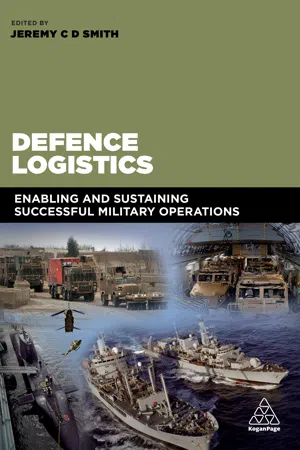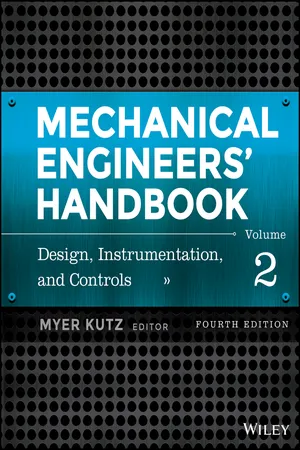Technology & Engineering
Availability
Availability refers to the readiness of a system or service to be used when needed. In the context of technology and engineering, availability often pertains to the reliability and uptime of systems, networks, and applications. It is a critical aspect of ensuring that technology resources are accessible and operational for users, minimizing downtime and disruptions.
Written by Perlego with AI-assistance
Related key terms
1 of 5
11 Key excerpts on "Availability"
- eBook - ePub
- Louis J. Gullo, Jack Dixon, Louis J. Gullo, Jack Dixon(Authors)
- 2021(Publication Date)
- Wiley(Publisher)
15 Design for AvailabilityJames Kovacevic15.1 Introduction
Would you like to know if your assets are in an operational state when they are needed and can be used at any given point in time? If so, then you are interested in Availability. Availability is a measure of the degree to which an item is in an operable state and can be committed at the start of a mission when the mission is called for at an unknown (random) point in time [1 ]. Availability considers the time difference between the times when an asset is expected to be operating compared with the time when an asset is not able to be operated. In addition, Availability may also be defined as the percentage of time that the asset is in an operable state. Typically, Availability is measured at the asset level, which may be the system level, the platform level, the equipment level, or the product level. The definition and configuration of the asset must be clearly understood before considering Availability as a requirement. Availability is a covariance function of how reliable the asset is and how easy the asset is to maintain. Reliability is based on how often failures of the asset occur. Maintainability is not only how quickly the asset can be restored to a functional state, but also considers how often preventive maintenance (PM ) is performed, and how long the asset is down for the planned and unplanned maintenance. One form of Availability considers any logistical delays in restoring the asset to a functional state or while performing preventive maintenance. Occasionally, individuals may confuse Availability with reliability. To ensure the difference is clear, here is a simple way to remember the differences:- Availability focuses on time utilization
- Maintenance focuses on process restoration
- Reliability focuses on failure elimination
15.2 What is Availability?
Availability comes in many different variations, each with its own use. The various types of Availability will be covered later in the chapter, but essentially, Availability considers the total time (TT ) available (e.g., a 30‐day period, or 720 hours), and what amount of time the asset is able to perform its intended function (e.g., 672 hours). In the example shown in Figure 15.1 - eBook - ePub
Defence Logistics
Enabling and Sustaining Successful Military Operations
- Jeremy Smith(Author)
- 2018(Publication Date)
- Kogan Page(Publisher)
This chapter will explain the terms Availability, reliability and maintainability, and the importance of logistics to delivering Availability and capability. It will then examine how properly articulated requirements can ensure that Availability, reliability and maintainability are all achieved. Once these have been established, the link to dependability will be made and then to capability. Examples will be used to demonstrate the importance of reliability, maintainability and particularly logistics, in achieving Availability and capability.Availability
Availability in general
There are different definitions of Availability and equations for how it can be calculated. As a start point, in essence users of equipment want that equipment to work when required. Availability is effectively all the time during which the equipment has not failed, so, for illustration: the washing machine is plumbed in and ready to work when needed; the main battle tank is in the armoured squadron’s assembly area, serviceable, fuelled, and ready for use when the commander needs it; the aircraft is on the flight line ready to be tasked for operations. Some authors write about the system functioning (Kumar, 2000) or about its functionability (Knezevic, 1997), but however Availability is expressed, the system is where it’s required, ready to perform the functions that the users demanded of it when they articulated their requirements (see discussion of user requirements and system requirements in Chapter 6 ).There are three main types of Availability within procurement and support, and each has a different meaning and is calculated in a different way. Hence, their use is different. The three types are: intrinsic Availability (Ai) , which is also known as inherent Availability; achieved Availability (Aa) ; and operational Availability (Ao) . For the user of the equipment operational Availability is the most important, but is also the most difficult to calculate.In very general terms, Availability is calculated as shown in Equation 8.1. From this point forward, this general expression of Availability will be referred to as classic Availability .In simple terms, the uptime is when the equipment is performing its designed function. The downtime is any other time during which it is not working, for example while it is undergoing replenishment, maintenance, or transportation from one location to another. However, it is not that straightforward, as will be explained shortly. - Punit Gupta, Mayank Kumar Goyal, Sudeshna Chakraborty, Ahmed A Elngar, Punit Gupta, Mayank Kumar Goyal, Sudeshna Chakraborty, Ahmed A Elngar(Authors)
- 2022(Publication Date)
- Chapman and Hall/CRC(Publisher)
SLAs implemented by technologies similar to cloud computing cannot be explicitly used for the same in their original form due to variations in their underlying implementation. The features and parameters that must be present in a cloud SLA will be limited as a result of this adoption. Several new features must also be introduced to accommodate the changing technology domain and time. With the widespread adoption of cloud computing, for example, trust should be a key component of the SLA. This section lists the main parameters that should be included in the cloud SLA and defines them in terms of the cloud. This work focuses on four requirements related to a CSLAT (cloud services: Availability, interoperability, reliability and trust). Additionally, a template is suggested that integrates specified parameters and aims for filling the divergence between current SLA templates and the specifications. A list of issues that should be answered in a cloud SLA is also given.4.3.1 Availability
For organizations that have resources in the cloud, Availability is a significant concern. The benefits of cloud computing contexts are lost if the Availability of services on the cloud is not valued highly. Despite technological advances, many outages have occurred in recent years, demonstrating that such lapses cannot be ignored. As a result, one of the motivators for the appropriate development of cloud computing for an organization is to have ultimate potential Availability, while maintaining the same service quality [21 –23 ].When a device is requested for use, Availability refers to the likelihood that it will perform as anticipated. In other words, Availability represents the likelihood that a device will not malfunction or need repair when it is required. Availability can be viewed as a behavior of reliability based on this concept. However, along with reliability, the system’s maintainability (ease of maintenance) should be considered when determining Availability. This means that when estimating Availability, we should also remember the system’s downtime. The Availability of a system is determined by the amount of downtime, which is considered for study by Sericola and Bruno (1999):- Point Availability: Probability that the system becomes available at time t.
- Average Availability: Fraction of time during a specified time period for which the system is available.
- Steady state Availability: Limit of the Availability function as t tends to infinity.
- Operational Availability: Similar to Availability but also includes the various downtimes such as administrative downtime, scheduled maintenance downtime and logistics downtime.
Of all the variations defined, point Availability is appropriate for use in cloud computing for real-time systems or critical transactions where Availability at a particular point in time is very important. Moreover, using the point Availability function other Availability values such as average Availability and steady state Availability can also be determined.- eBook - ePub
Service Availability
Principles and Practice
- Maria Toeroe, Francis Tam, Maria Toeroe, Francis Tam(Authors)
- 2012(Publication Date)
- Wiley(Publisher)
Part One Introduction to Service AvailabilityPassage contains an image Chapter 1 Definitions, Concepts, and Principles Francis Tam Nokia Research Center, Helsinki, Finland
1.1 Introduction
As our society increasingly depends on computer-based systems, the need for making sure that services are provided to end-users continuously has become more urgent. In order to build such a computer system upon which people can depend, a system designer must first of all have a clear idea of all the potential causes that may bring down a system. One should have an understanding of the possible solutions to counter the causes of a system failure. In particular, the costs of candidate solutions in terms of their resource requirements must also be known. Finally, the limits of the eventual system solution that is put in place must be well understood.Dependability can be defined as the quality of service provided by a system. This definition encompasses different concepts, such as reliability and Availability, as attributes of the service provided by a system. Each of these attribute can therefore be used to quantify aspects of the dependability of the overall system. For example, reliability is a measure of the time to failure from an initial reference instant, whereas Availability is the probability of obtaining a service at an instant of time. Complex computer systems such as those deployed in telecommunications infrastructure today require a high level of Availability, typically 99.999% (five nines) of the time, which amounts to just over five minutes of downtime over a year of continuous operation. This poses a significant challenge for those who need to develop an already complex system with the added expectation that services must be available even in the presence of some failures in the underlying system.In this chapter, we focus on the definitions, concepts, principles, and means to achieving service Availability. We also explain all the conceptual underpinning needed by the readers in understanding the remaining parts of this book. - eBook - PDF
- Terry Critchley(Author)
- 2014(Publication Date)
- Auerbach Publications(Publisher)
Therefore, not only is Availability a function of reliability, but it is also a function of the reparability, maintainability, or serviceability. Figure 2.1 illustrates the factors that affect the definition of a system and its Availability, that is, functioning according to its specification for a period of time. It should be noted here that there is a difference between the hours a system is actually working (switched on, lights flashing) and the hours it should be available to users, that is, fully supported, all relevant hardware and software initialized and all lights blazing. Availability: 7 R’s (SNIA) † Mark Fleming (employed at IBM in 2008, the date of his presentation) lists 7 R’s that impact Availability: Redundancy: To eliminate single points of failure (SPoFs). Reputation: What is the track record of the key suppliers in your solution? * Mean time between failures, covered in detail later along with its confusing companion, MTTF, mean time to failure. Don’t worry, we’ll get there by the end of Appendix 2. † You can find the presentation on the SNIA website (www.snia.org). Reliability and Availability ◾ 17 Reliability: How dependable are the components and coding of the products? Reparability: How quickly and easily can suppliers fix or replace failing parts? Recoverability: Can your solution overcome a momentary failure without impacting the end users? Responsiveness: A sense of urgency is essential in all aspects of high Availability (HA). Robustness: Can the solution survive a variety of forces working against it? This same list can be found in Rick Schiesser’s book IT Systems Management (2002) * so I am unsure of the true origin of the 7 R’s discussion. - eBook - PDF
- Eric Bauer, Xuemei Zhang, Douglas A. Kimber(Authors)
- 2009(Publication Date)
- Wiley-IEEE Press(Publisher)
It is the probability that a unit will be able to perform its specified function for a stated period of time. Availability and reliability are often confused, partly because the term reliability tends to be used when Availability is what was really intended. One classic example that helps distinguish relia- bility from Availability is that of an airplane. If you want to fly from Chicago to Los Angeles, then you want to get on a very reli- able plane, one that has an extremely high probability of being able to fly for the 4 to 5 hours the trip will take. That same plane could have a very low Availability. If the plane requires 4 hours worth of maintenance prior to each 4 hour flight, then the plane’s Availability would only be 50%. High-Availability systems are designed to automatically de- tect, isolate, alarm, and recover from inevitable failures (often by rapidly switching or failing over to redundant elements) to main- tain high service Availability. A typical design principle of so- called “high Availability” systems is that no single failure should cause a loss of service. This design principle is often referred to as “no single point of failure.” As complex systems may be comprised of multiple similar or identical elements, it is often useful to distinguish between ser- vice Availability and element Availability. Service is generally the primary functionality of the system or set of elements. Some ser- vices are delivered by a single, stand-alone element; other services are delivered by a set of elements. A simple example of these com- plementary definitions is a modern commercial airliner with two jet engines. If a single jet engine fails (an element failure), then 2.1 Availability, SERVICE, AND ELEMENTS 7 propulsion service remains available, albeit possibly with a capac- ity loss, so the event is not catastrophic; nevertheless, this element failure is certainly an important event to manage. - eBook - ePub
Mechanical Engineers' Handbook, Volume 2
Design, Instrumentation, and Controls
- Myer Kutz(Author)
- 2015(Publication Date)
- Wiley(Publisher)
In general, most practitioners consider MTTF and MTBF to be identical. In a strict reliability sense, MTTF is used in reference nonreparable systems such as satellites. By contrast, MTBF is used in reference to reparable systems that can entertain multiple failures and repairs in the system's life cycle. For practical purposes, both measures of system performance are identical, and the use of the MTTF and MTBF is indistinguishable from that viewpoint.4.1 Definition of Systems Effectiveness Measures
Serviceability
This is the ease with which a system can be repaired. It is a characteristic of the system design and must be planned at the design phase. It is difficult to measure on a numeric scale.Reparability
This is the probability that a system will be restored to a satisfactory condition in a specified interval of active repair time. This measure is very valuable to management since it helps quantify workload for the repair crew.Operational Readiness (OR)
The probability that a system is operating or can operate satisfactorily when the system is used under stated conditions. This includes free (idle) time. It is defined as follows:Maintainability
This is the probability that a system can be repaired in a given interval of downtime.Availability
Availability is defined as the probability that a system is available when needed or the probability that a system is available for use at a given time. It is simply the proportion of time that the system is in an operating state and it considers only operating time and downtime.59Intrinsic Availability
Intrinsic Availability is defined as the probability that a system is operating in a satisfactory manner at any point in time. In this context, time is limited to operating and active repair time. Intrinsic Availability, , is more restrictive than Availability and hence is always less than Availability. It excludes free or idle time. It is defined as follows:60Inherent Availability
Inherent Availability, - eBook - PDF
Information Security Management
Concepts and Practice
- Bel G. Raggad(Author)
- 2010(Publication Date)
- CRC Press(Publisher)
The annual downtime is equal to 0.073 days, 1.752 hours, or 1 hour 45 minutes and 7.2 seconds. System Availability expresses users’ perception about systems while system reli-ability expresses real component failures. While Availability distress affects business and may directly affect users, the reliability will directly impact maintenance costs but does not directly impact Availability unless business processes are affected. 10.8 Related Availability Definitions Availability is the probability that a system would operate at a particular point in time. It answers the question: “How likely is it that my system is operating at a specific time?” Availability differs from reliability because it factors repairs into the measurement. To determine Availability, the time to perform a repair must be known. Because Availability is expressed as a probability, it is a value between 0 and 1. We next present several other definitions that are closely related to Availability. 468 ◾ Information Security Management: Concepts and Practice 10.8.1 Concepts Closely Related to Availability 10.8.1.1 Downtime or UnAvailability Downtime or unAvailability is the compliment of Availability. It is a probability value, or a number between 0 and 1, that indicates the likelihood that a system would not be operational at a specified point in time. 10.8.1.2 Reliability Reliability is the probability that the system would perform as expected without failure for a fixed time period. Reliability takes time into account. The measure of reliability answers the question “How likely is it that my system will remain opera-tional over a period of time?” Because reliability is expressed as a probability, it is always a value between 0 and 1. 10.8.1.3 Fallibility or Unreliability Fallibility or unreliability is the compliment of reliability. If your reliability is 0.9, the unreliability is equal to 1.0 − 0.9 = 0.1. - eBook - PDF
- James Persse(Author)
- 2016(Publication Date)
- Van Haren Publishing(Publisher)
6. Availability Management Availability may be the most visible of service attributes. If a user wants to access a technology device –an application, email, a printer – and it is down, that user sees a problem. More so, business may be interrupted, production might fall, frustrations can grow. In most IT organizations a significant percent of calls that come in to the Service Desk deal with issues of Availability. In IT organizations that are proactively able to control the Availability of their services, customer satisfaction levels tend to be high. When Availability problems pepper the enterprise, customer satisfaction drops. In this chapter we will look at the aspects of Availability Management that affect service delivery and service quality, and we will delve into the recommendations ITIL sets out for managing these aspects in a consistent and predictable manner. To begin, let’s start with the purpose of the Availability Management process as ITIL states it: “…To provide for an organization’s present and future Availability needs balanced against cost.” 1 That purpose statement is very much like the purpose statement for Capacity Management. It is easy to understand why. Of all the operating qualities that an IT service can demonstrate, the two that are perhaps the most crucial to effective delivery are capacity and Availability. But because these two areas can be deeply technical in nature, these operating qualities, by necessity, come at a cost, sometimes at a significant cost. Balancing cost with performance (and supply with demand) requires an organization to approach Availability concerns (just as it approaches capacity concerns) with a well designed and well structured management program. This leads to the objective ITIL sets for Availability Management. - eBook - PDF
The Complete Guide to IT Service Level Agreements
Aligning IT Services to Business Needs
- Andrew Hiles(Author)
- 2016(Publication Date)
- Rothstein Publishing(Publisher)
2 THE MEASUREMENT OF SERVICE Availability AND QUALITY: KEY METRICS AND TECHNIQUES 2.1 Availability: Optimizing Uptime To ptimise uptime, we need methodologies in place for the day-to-day running of the computer installation. Methodologies to routinely manage: Services central distributed PC-based interactive batch network support. Depending on: Resources hardware networks infrastructure plant environment/space software people suppliers finance. Against: Objectives in terms of: Availability performance capacity security quality. But Availability suffers most not from the routine, but from abnormal events. The two most important disciplines in respect of Availability are probably management of: change, and problems. Figure 2.1 shows the relationship of infrastructure management methodologies to service level reporting. Figure 2.1: Service Level Reports and Service Management 2.2 Change Management One of the most common causes for lack of systems Availability is poor Change Management. Change Management is normally thought of in a systems or applications context. It is true that increasingly software has taken over from hardware as the prime cause of downtime. In terms of application software, Change Management needs to control the migration of an application through the various stages of its development into operational acceptance and finally SERVICE LEVEL REPORTS Availability MANAGEMENT PERFORMANCE MANAGEMENT CAPACITY MANAGEMENT SECURITY MANAGEMENT QUALITY MANAGEMENT CHANGE MANAGEMENT PROBLEM MANAGEMENT` user acceptance. All too often the last two stages are omitted from the implementation process. The penalties for omitting these vital steps are that Operations may be left with fragile applications which can impact not only the users of that application but also other customers, maybe even bringing the system down with it. - William A. Hustrulid, Mark Kuchta, Randall K. Martin(Authors)
- 2013(Publication Date)
- CRC Press(Publisher)
There are three different availabilities: • Operational Availability (or physical Availability) • Mechanical Availability • Inherent Availability which are commonly calculated. Node 1 corresponds to operational Availability which is the most commonly used and often abbreviated to just ‘Availability’. This is also the most convenient to use in calculations. The more meaningful Availability is however mechanical Availability which relates working hours to working hours plus downtime hours. Table 13.3 gives typical mechanical availabilities for some mining machines. If the standby hours equal zero then the operational and mechanical availabilities are equal. Figure 13.3 is a plot of the ratio of the two availabilities and the standby to working hour ratio. 976 Open pit mine planning and design : Fundamentals Table 13.2. Definitions and formulas for calculating Availability. Source unknown. Term Definition Availability: The proportion of time during which the machine is capable of performing the required function. Availability includes operational Availability, inherent Availability, and so on. Remark 1: Often the “Availability” Is used to denote operational Availability. Operational Availability: The proportion of time in which a machine is in an operational conditions. It is defined by the following equation: Operational Availability = Up-time Up-time + Downtime Remarks 1: Because this is the most widely used kind of indication, it is often abbreviated to just “Availability”. 2: This indication does not express the reliability of the machine alone, but rather of the overall system including the support system. Mechanical Availability: Obtained by subtracting the stand-by hours from the denominator and numerator in the equation defining operational availablity.
Index pages curate the most relevant extracts from our library of academic textbooks. They’ve been created using an in-house natural language model (NLM), each adding context and meaning to key research topics.










